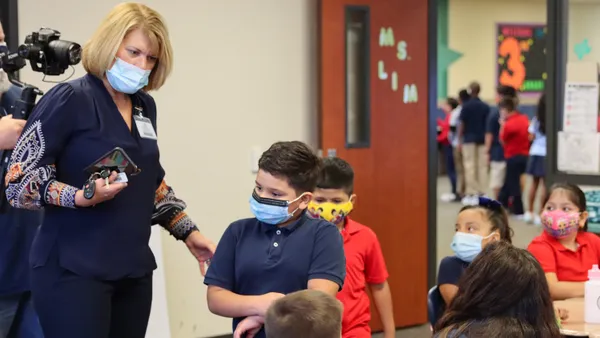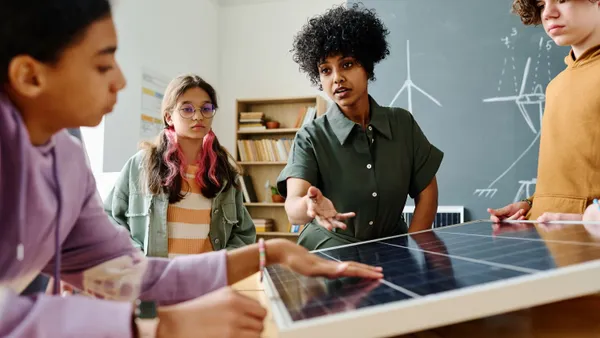Dive Brief:
- Some future teachers are using augmented and virtual reality programs to gain classroom experience before they ever lead an actual class, according to University Business.
- The programs, increasingly in use at institutions throughout the country, offer future teachers the opportunity to fail and learn from mistakes in a "low-stakes" setting, according to Penn State Ed Tech Services Director Kyle Bowen.
- The virtual classroom students have individualized personalities and react to the instruction of the student in the VR space, and supporters say programs say they can be amended to accommodate for changes in student age, background and subject matter. Such programs also can be used to test new classroom layouts or designs, and Bowen expects schools to experiment with technology like 360-degree videos in the future.
Dive Insight:
Incorporating virtual and augmented reality programs into teacher education curricula can introduce future teachers to unfamiliar high-needs environments and classroom settings, according to Richard L. Lamb, an associate professor and the director of the Neurocognition Science Laboratory at the University of Buffalo Graduate School of Education. In a recent Education Dive interview, he said schools are still concerned about how to affordably scale VR programs for widespread instructions, though the tools becoming more widely accessible and affordable. And such programs allow students to engage in repetition of sound practices without needing a classroom to experiment.
Lamb said VR can be used to help introduce educators to the challenges facing students from different backgrounds; this form of instructional empathy, as Lamb puts it, is important to consider, especially when one takes into account that the K-12 educator population in the country does not mirror the general population. However, higher ed institutions should keep in mind that VR programs may not adequately prepare a teacher population that is not racially or economically diverse for the unique challenges facing diverse K-12 classrooms. Additionally, if higher ed institutions are using VR training to overcome a lack of racial, economic or other diversity in backgrounds of future educators, it indicates the primary problem is the lack of diversity in the teaching force, and schools of education should invest resources to attract a more diverse teaching force. At the International Colloquium on Black Males in Education hosted in Toronto this past October, many practitioners shared recruiting black men to the teaching force is as simple as personally approaching them with the suggestion.
Teacher education programs at colleges and universities should be wary not to forgo (or inadvertently shortchange) the hard work needed to diversify the K-12 teacher pipeline by proposing VR programs as a potential solution to the problems inherent with that lack of diversity. This also echoes Lamb's broader point that VR must not be viewed as a solution in itself, but as a tool to be used in conjunction with other conventional (and unconventional) instructional methods. Institutions interested in using VR in teacher education programs could consider building relationships with K-12 educators working in the environments the VR educators hope to double; they may be better able to chart the ways in which the VR programs help to bridge the gap, and in which ways those gaps in teacher education may persist.
Autumn A. Arnett contributed to this piece.














